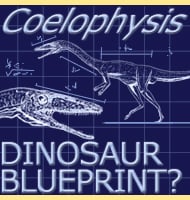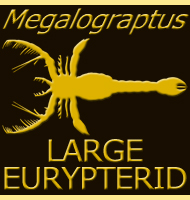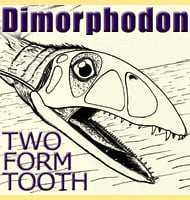At the start of the twenty-first century ‘bear dogs’ began making frequent appearances in popular media about extinct mammals, particularly predatory ones.
Usually the bear dog in question is Amphicyon, the type species of the Amphicyonidae group of mammals, which has some of the physically largest attributable remains.
However while Amphicyon was the first genus named, it was but one of many bear dog genera that are known to have existed.
The bear dogs, also known as amphicyonids, came in all sizes from across Eurasia, Africa and North America, and as a group were one of the most successful kinds of mammals of all time.
Are the bear dog amphicyonids bears or dogs?
The short answer is neither. Amphicyonids were similar to primitive dogs in body proportions, while having a much heavier build similar to that of a bear.
Most (possibly all) amphicyonids are also thought to have been plantigrade rather than digitigrade like modern dogs.
For those not familiar with these terms, amphicyonids walked with the foot bones flat against the ground (similar to bears) so that the full foot is in contact with the ground while in modern dogs the bones are off the ground and serve as an extension to the length of the leg, which means that modern dogs essentially walk on their toes.
Classification
Where and how amphicyonids are related to other mammals continues to spark debate amongst palaeontologists which is why the precise answer can vary depending upon which palaeontologists you ask.
The first easy step in locating amphicyonids is to place them within the Carnivora, a group that contains all of today’s meat eating placental mammals, and is thought to have had its origins from small mammals like Miacis back in the Eocene epoch.
From here amphicyonids are always placed within the Caniformia (dog-like) group of carnivorans which includes everything that is non-cat-like (feliformia) such as dogs, bears, seals (pinnipeds), etc.
At their inclusion in the Caniformia, the classification of amphicyonids becomes muddled depending upon source. Some palaeontologists treat the amphicyonids as belonging to their own group within the Caniformia. However many palaeontologists consider amphicyonids to belong within another subgroup of the Caniformia called the Arctoidea.
When used, this sees amphicyonids treated as being more closely related to bears and more distinct from dogs. In time it may be possible to establish a more universally distinct classification for the Amphicyonidae and how animals within it are related to others of the time.
This would not just be a case of new bear dog discoveries however, but remains of other kinds of Eocene and Oligocene era mammals, possibly including types that we do not yet know about.
With mammals of the Amphicyonidae being loosely called ‘bear dogs’, they can sometimes be confused with the Hemicyonidae which are called ‘dog bears’. Members of the Hemicyonidae (such as Hemicyon, the type genus of the group) are considered to be closely related to bears while displaying canine characteristics.
When these two groups are mentioned in the same context as one another it would be very simple to make a mistake in the order of the words for incorrect information to be passed, but this is a good example of why animal groups are given binomial names (Amphicyonidae, Hemicyonidae, etc.) so that such confusion can be avoided.
Sometimes smaller sub groups of amphicyonids are created to help clarify studies. One example is the haplocyonine bear dogs which usually comprises Haplocyon, Haplocyonoides and Haplocyonopsis on the basis of their similarity to one another.
While such terms can help clarify discussion of different genera, they may not be in universal use by all researchers and so the genera can also be referred to by their larger groups (amphicyonine or amphicyonid for example).
Rise and fall of the bear dogs
Some of the oldest bear dog remains belong to Daphoenus and are dated to as far back as 40.4 to 37.2 million years ago, something that places them in the Bartonian period of the Eocene epoch. This is in contrast to the common statement that amphicyonid bear dogs originated in Asia since the daphoenine bear dogs like Daphoenus appear to have been exclusive to North America.
A little later in the Priabonian period of the Eocene and you get the first amphicyonine bear dogs (those that belong to the Amphicyoninae) such as Cynodictis and Guangxicyon appearing in Eurasia.
From the end of the Eocene and into the Oligocene bear dogs continued to diversify and spread out and become more common. Not only were both the Daphoninae and Temnocyoninae groups of bear dog well established in North America during the Oligocene period, but they were joined by the first Eurasian bear dogs of the Amphicyoninae, such as Ysengrinia in the Rupelian stage.
During the Oligocene period however most of the known bear dog genera have been estimated to be well below one hundred kilograms in weight, with some such as Drassonax and Paradaphoenus being estimated to be even below two kilograms in weight.
For modern comparisons, the North American raccoon (Procyon lotor) can weigh between three and half to nine kilograms, while the red fox (Vulpes vulpes) can weigh from just over two to fourteen kilograms (though rare individuals may be heavier). Why the early bear dogs seem to have been restricted to such small sizes is actually quite simple to understand when you consider that they were not the only predators on the landscape.
The creodont mammals had evolved much earlier, and some such as Sarkastodon and certain species of Hyaenodon were already in the apex predator slots of the ecosystems. Wolf-like mesonychids (mammals similar to Mesonyx) were also abundantly active during the Eocene to Oligocene eras.
Further competition would have also come from the nimravids, one of the groups of mammals that are also known as the ‘false sabre-toothed cats’ which also had their origins in the late Eocene. To further add to this mix you have the entelodonts that may have actively killed animals as well as challenged other predators for their kills.
With so many predators already filling the top predator niches, the early bear dogs would have had a difficult time joining and displacing them from their position, and so adapted to fill and hunt in the predatory niches that the top predators simply could not fill.
This would see the earlier bear dogs hunting small animals that were both too quick and offered too little sustenance for the larger predators to expend their energy on. They are also likely to have also supplemented their hunting by scavenging the left over remains of the larger kills of predators, but this would also be risky since the larger predators were easily capable of killing smaller bear dogs with little effort.
Time however was ultimately on the side of the bear dogs since the Oligocene period was a time of gradual climatic change which would force a shift in the types of ecosystems and the animals that lived in them.
The Eocene period started as a warm tropical period which saw lush forests covering most of the planet, but cooling during the latter half began to cause a decrease in the coverage of the tropical forests.
This development that started in the Eocene would accelerate in the Oligocene with tropical forests becoming equatorially restricted, leaving increasingly large open areas in their wake. These areas began to be filled with grasses which during the later Miocene period would develop into vast grassy plains.
Many of the herbivorous mammals such as primitive horses like Mesohippus were still browsers of vegetation rather than grazers of grass and this meant that predators could approach and lurk in the undergrowth without being seen by their prey.
It would then be a simple matter of the predator waiting for its target to come close enough for an ambush, quickly bursting out from cover and hitting their victim before it knew what was happening.
However the on-going loss of much of the forests brought three problems for these predators. One is that they no longer had the cover to approach virtually unseen, something that meant that they would now have to wait for their prey to come to them rather than actively hunt it out. Second is that the browsing herbivores now had to cover more ground to find suitable plants to eat. This saw a drive towards more energy efficient locomotion which was simply achieved by evolving longer legs so that they could cover more ground with each step. A secondary side benefit from this of course is that they could now also run much faster than their ancestors, so when they spotted a nearby predator (something that was getting easier for them to do), they had a much easier time escaping them since the older predators were adapting for running short distances in an ambush, not long high speed pursuit over open ground.
Third is that towards the Miocene more and more herbivores made the switch to eating grass instead of browsing upon vegetation, which meant that the numbers of herbivores presenting themselves as targets gradually became less and less.
As the older predator forms began to face harder times in the Oligocene, the bear dogs actually found themselves at an advantage especially the amphicyonine bear dogs that had the physical proportions to match the new herbivores for speed as well as retain the striking power to effectively take them down.
With this predatory niche open the bear dogs quickly adapted to fill it and with the start of the Miocene period, the larger genera such as Amphicyon and Pseudocyon had appeared while the creodonts were but a shadow of their former success. The Miocene also brought a severe reduction in the number of nimravid genera, but these seem to have been largely replaced by the barbourofelids, another group of cat-like mammals that were once largely classed to be the same as the nimravids.
Some such as Barbourofelis grew large enough to challenge some bear dogs, though it was still not as large as some of the largest species such as Amphicyon ingens. The entelodonts also survived for a time into the Miocene by becoming even larger as evidenced by the appearance of largest entelodont genera such as Daeodon and Paraentelodon.
The Miocene period was not the end of the changes however; it was simply another chapter in the on-going shift towards a cooler dryer planet.
As types of animals evolve you often see a shift towards some of the species becoming larger and more specialised, something that is driven by the success of previous adaptations tempered by competition with other forms. In predators large size allows them to hunt larger prey as well as dominate other predators so that they could not challenge them.
The problem is that while this secures short term survival, long term continuance of the species is always in doubt because these specialisations rely upon only a few factors at best. When these factors change the species is in a position where it must adapt or die. This happened to the creodonts (which actually managed to survive in very limited numbers until the later stages of the Miocene) the mesonychids, entelodonts, nimravids and barbourofelids. It would also happen to the amphicyonids.
The most commonly depicted bear dogs are the larger ones of the Miocene era such as Amphicyon ingens (though Pseudocyon may actually have been a bit larger). However, Miocene era bear dogs continued to come in a variety of sizes with some such as Ictiocyon being estimated to be less than one and a half kilograms in weight (similar to their Oligocene era relatives).
As a group the amphicyonids seem to have filled every single predatory niche, but when broken down into specific genera and species they come across as being quite specialised for different roles. For example, the small Ictiocyon was probably a very efficient hunter of small rodent-like mammals, but it was beyond tackling large horses like Hipparion. Amphicyon was easily capable of taking down chalicotheres like Chalicotherium, but smaller animals simply wouldn’t do, even if Amphicyon managed to catch a small two kilogram animal, it would need to eat more than just one a day to keep its huge body going.
Towards the end of the Miocene and start of the Pliocene periods, all new groups of mammalian carnivores began to appear, and one of the significant things about these appearances is that they included the more direct ancestors to most of the mammalian predators that we know today.
Many of these forms which included the ancestors to modern wolves and dogs as well as true cats of the Felidae all developed further refined bodies more suited to open environments such as plains and steppe.
The main factor for the rise and success of these new mammals however does not just seem to have been a case of continued physical refinement, but the establishment of higher levels of intelligence (something that a tens of million years earlier had actually helped amphicyonids dominate many of the older mammal types).
Study of bear dog skulls leads to the reconstruction and study of the brain in terms of overall size and development. The results of brain studies for bear dogs is that in terms on mental development they were below the level that modern day predators are at.
Caution should be used before declaring bear dogs to be stupid however; it’s just that most of their brain development seems to be orientated more towards senses such as smell and vision rather than higher level processes such as problem solving.
What this means is that bear dogs were very capable of processing information from their surrounding environment, but they were more reliant upon physical ability than mental processing.
This means that the bar dog thought process probably went along the lines of find prey, approach prey, catch, prey, kill prey and eat prey.
Other predatory mammals will of course operate to an identical thought process, but the newer predators were beginning to elaborate on this. Modern day dogs and some species of cat have considerably more developed brains than those attributed to older mammal types.
One benefit of this development is a greater level of social interaction to the point that some types of animal form groups that hunt as a single unit. The exact point of when mammals began to hunt in packs is next to impossible to determine with certainty, but fossil evidence concerning wolves and even the sabre-toothed cat Smilodon combined with modern studies of living predators has concluded that mammals were pack hunting at least as far back as the Pleistocene.
If these traits can be carried back to their ancestors in the Pliocene then we see a world where the numbers of older solitary predators were dwindling in the face of pack hunting mammals.
At the moment there is no definitive evidence that proves pack hunting in bear dogs. In fact most depictions of amphicyonids hunting in groups are actually based upon the link between the more common name of bear dog with actual modern dog behaviour.
As it has already been stated at the top of this article bear dogs were not dogs. They were related to a certain degree, but they were still separate. A lack of fossil evidence combined with an underdeveloped brain when compared to modern mammalian predators leads to the conclusion that amphicyonids were probably solitary animals for most of their lives.
Another factor in the demise of the bear dogs would be continually changing prey species.
Horses in the early Miocene were still very primitive in development, but by the end of the Miocene they had become one of the fastest animal groups.
Other mammals continued to develop speed and agility as well as possibly strategy (for example, a pack of modern wolves will deliberately spook a herd to run in order to tire the weaker individuals), while some began to grow bigger and more solid to the point that even a bear dog like Amphicyon would have had difficulty in tackling them.
The new predators however had the intelligence to adapt their behaviour to meet these new challenges, but the bear dogs as powerful as they had been were now relics of an older age. Surely enough by the end of the Miocene the bear dogs found themselves obsolete in a changing world with most bear dog genera gone by the end of the Miocene.
The only possible exception to this is Arctamphicyon which seems to have lasted slightly longer till the early Pliocene.
Relict populations?
There are often claims that supposedly extinct animals may yet still survive in the farthest and least explored regions of the planet. Indeed new species of animals still continue to be discovered and described and some of these creatures have existed in folklore long before they were officially recognised by science.
In North West Canada, and even some connecting parts of the United States there have been reports of a large wolf-like animal, but powerfully built similar to a bear, particularly the fore quarters where the legs are longer than the rear as well as a broad head much wider than a wolf and with a coat of long white fur.
These features all correspond with the physical traits of the larger bear dogs (although we can’t be certain about the colour) as well as the description of a creature in Native American folklore called the Waheela. Back in the twentieth century the cryptozoologist Ivan T. Sanderson drew this very conclusion that stories of the Waheela may in fact be accounts of a relict population of bear-dogs (although confusingly he additionally referred to Canis dirus, better known as the dire wolf for his theory, and this was a true wolf not a bear dog).
The Waheela is a creature of legend yet one that many people have claimed to have seen even in modern times.
Additionally there seems to be a concentration of reports of the Waheela that come from the Nahanni Valley, a place that is also known by the more grisly name of the ‘Headless Valley’ due to the discoveries of the bodies of people that were missing their heads.
Stories from people who claim to have seen the Waheela are usually fairly consistent although it could be argued that the story of the Waheela is becoming more popular in the mainstream and that more people now know what to say, or are led to a specific conclusion because of this whereas otherwise they might not have said Waheela.
The story and description of the Waheela is also similar to other creatures of legend called the Shunka Warakin and the Amarok, so it seems that these different stories may all be describing the same creatures.
Although the story is good, it is currently impossible to establish if the Waheela is a late surviving bear dog, or even if it exists at all because so far it is only legend. No body or part of has ever been presented for scientific study, and there is no definitive video or photographic evidence of a living Waheela in its natural habitat.
This does not completely discount the idea that a still unknown large mammal might be roaming around the wilds of Canada given there remoteness and lack of people to witness something, which is why the chance of something being found is viable, if slim.
The idea that Waheela are surviving bear dogs is a little harder to swallow, but suggesting that a legendary cryptid is a relict of a prehistoric creature is not unknown. Bigfoot (also known as Sasquatch among other names) has been suggested to be a relict population of the giant ape Gigantopithecus.
One obvious problem is that here there is a gap of several million years in the fossil record from where the oldest Gigantopithecus remains are dated and modern times. Another serious problem is that Gigantopithecus is so far only known from Asia and fossils have never been found in North America for any time.
However only the gap in the fossil record is applicable to the Waheela/bear dog theory since bear dogs, particularly the remains of large ones like Amphicyon are well documented in North America.
Most of the last of the bear dog remains in North America are dated to the end of the Miocene period (with some Asian genera such as Arctamphicyon suggesting an early Pliocene disappearance for the last of the group). This leaves a gap of some five million years between the end of the Miocene and modern times where no bear dogs are currently known.
Five million years is a long time for an animal to disappear, and usually it’s the case that animals don’t come back, but there are precedents where supposedly long extinct animals have been discovered to still be alive. The most world famous example of this is the discovery of living coelacanths.
This group of fish first appear as fossils from as far back as four hundred million years ago and continue until about sixty-five million years ago. Science had them down as long extinct until 1938 when a fishing trawler caught a bizarre looking fish off the coast of south-east Africa which was later identified as a coelacanth.
Since this time not only have more coelacanths been caught, they have also been filmed in their natural habitats by divers. In this case we have proof that just because an animal has not been scientifically described or documented it can still exist, we just never knew until we began to develop behaviour and technology that caused us to stumble upon it.
As stated above there is currently no definitive proof that the Waheela exists, but for a moment let’s assume that it does. Stories and reports about it say that it is a solitary creature. It’s unlikely to be a misidentified polar bear since most reports are several hundred miles south from their known range. The precedent for an animal to disappear in terms of fossils to later be discovered alive has been established. Bear dogs were once widespread across North America.
For a genus of bear dog to survive for at least five million years past the point where they are believed to have become extinct they would have had to of found a way to adapt and survive in a world where new predators such as early dogs, wolves, bears and felids were replacing them.
Direct competition is out of the question, as can be established by the mass disappearance of bear dog genera towards the end of the Miocene.
It’s not impossible that a genus may have steadily moved north out of the range of most of the other large predators. Also by being solitary there would not be so much pressure upon finding enough food to keep a large pack going. This however would still be a long shot, especially when you consider that even if a bear dog managed to cope with all these new predators,
it would also need to survive an on-going series of glaciations (although this might explain the white coat) as well as the mass-extinction of the North American megafauna at the end of the Pleistocene.
A more mundane explanation for the existence of the Waheela may actually come from a story concerning the Amarok. One creature identified as an Amarok was killed only to be later found to have been an unusually large wolf. This begs the questions that could Waheela merely be mutant grey wolves that have perhaps been shunned from their packs because of their gigantism? A larger wolf would require more food which would mean less for the rest of the pack, endangering the packs continued survival.
This principal is also seen as why the more powerfully built dire wolf went extinct towards the end of the Pleistocene while the more gracile grey wolf (Canis lupus) survived. The right genetic mix to produce a larger than normal wolf might also carry a colour mutation or perhaps even a form of albinism which produces the white coat.
The problem with all of the above is that it remains only speculation, and the more specific the speculation the less likely it could be as the odds for it happening increase.
List of some bear dogs under the Amphicyonidae
| Adilophontes (Daphoeninae) Afrocyon (Amphicyoninae) Agnotherium (Amphicyoninae) Amphicyanis (Amphicyoninae) Amphicyon (Amphicyoninae) Arctamphicyon (Amphicyoninae) Brachycyon (Amphicyoninae) Cynelos (Amphicyoninae) Cynodictis (Amphicyoninae) Daphoenictis (Daphoeninae) Daphoenodon (Daphoeninae) Daphoenus (Daphoeninae) Drassonax (Amphicyoninae) Euroamphicyon (Amphicyoninae) Goupilictis (Amphicyoninae) Guangxicyon (Amphicyoninae) Haplocyon (Amphicyoninae) Haplocyonoides (Amphicyoninae) | Haplocyonopsis (Amphicyoninae) Harpagophagus (Amphicyoninae) Ictiocyon (Amphicyoninae) Ischyrocyon (Amphicyoninae) Magericyon (Amphicyoninae) Mammacyon (Temnocyoninae) Paradaphoenus (Daphoeninae) Pliocyon (Amphicyoninae) Protemnocyon (Amphicyoninae) Pseudamphicyon (Amphicyoninae) Pseudarctos (Amphicyoninae) Pseudocyon (Amphicyoninae) Pseudocyonopsis (Amphicyoninae) Sarcocyon (Amphicyoninae) Temnocyon (Temnocyoninae) Vishnucyon (Amphicyoninae) Ysengrinia (Amphicyoninae) |









